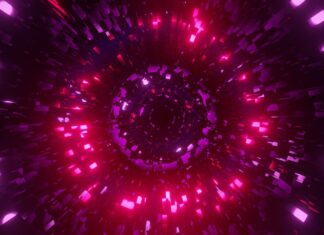Resin printing, often referred to as stereolithography (SLA) or digital light processing (DLP) 3D printing, is a cutting-edge and highly precise additive manufacturing technology that has revolutionized the world of rapid prototyping and small-scale production. This advanced 3D printing method utilizes photopolymer resins, which solidify when exposed to specific wavelengths of light, to create intricately detailed objects with a level of precision that was once considered unattainable. In this comprehensive exploration of resin printing, we will delve into the history, processes, materials, applications, advantages, and challenges associated with this transformative technology.
Resin printing, commonly known as SLA or DLP 3D printing, represents a significant advancement in the field of additive manufacturing. The use of liquid photopolymer resins as the primary printing material, along with precise light-based curing mechanisms, allows for the creation of highly detailed, intricate, and complex 3D objects. This technology has not only brought a new level of precision to 3D printing but has also opened up possibilities in various industries, from healthcare and aerospace to art and jewelry design.
The journey of resin printing can be traced back to the 1980s when Chuck Hull, the co-founder of 3D Systems, invented stereolithography, the first-ever 3D printing technology. Stereolithography, or SLA, served as the foundation for what would eventually become resin printing. This groundbreaking technology introduced the concept of layer-by-layer additive manufacturing, where a UV laser or other light source selectively solidifies a liquid photopolymer resin layer, forming the desired 3D object. Over the years, this technology has evolved, becoming more accessible and affordable for a broader range of applications.
Resin printing operates on the principle of photopolymerization, where a photopolymer resin undergoes a chemical reaction when exposed to a specific wavelength of light. In the case of SLA and DLP printing, this reaction is initiated by a UV light source, often a laser or a digital projector, that cures the resin layer by layer. The key difference between SLA and DLP lies in the light source and curing method. In SLA, a precise UV laser scans the resin surface, selectively curing it to create a solid layer. In DLP, a digital projector or light array exposes an entire layer to UV light simultaneously. Both methods offer high precision and resolution, making them ideal for applications where detail is crucial.
One of the defining characteristics of resin printing is its ability to produce exceptionally detailed and intricate objects. The high resolution of resin printing technology allows for the creation of fine features, smooth surfaces, and intricate geometries that are often challenging to achieve with other 3D printing methods. This makes it particularly well-suited for industries where precision and detail are paramount.
Resin printing offers a wide range of material options, with different types of photopolymer resins tailored to specific applications. Standard resins, often referred to as general-purpose resins, are suitable for a variety of applications and offer a balance of strength, durability, and detail. Engineering resins are formulated for applications that require enhanced mechanical properties, heat resistance, or impact resistance. Specialty resins cater to industries like dentistry, jewelry, and healthcare, providing materials with biocompatibility and compatibility with specific sterilization processes.
The versatility of resin printing materials also extends to aesthetic possibilities. Resins come in a spectrum of colors, translucencies, and surface finishes, allowing for a high degree of customization in appearance. This makes resin printing a popular choice for creating aesthetically pleasing prototypes, art pieces, and functional objects.
The applications of resin printing span a wide range of industries, with each benefitting from the technology’s unique capabilities. In the field of healthcare, for instance, resin printing has transformed the production of dental models, crowns, bridges, and orthodontic devices. The precision of the technology ensures a perfect fit for patients, while biocompatible resins provide a safe and comfortable experience.
In the aerospace industry, resin printing has found applications in creating intricate and lightweight components. The ability to produce complex geometries and structures with high precision has made it an invaluable tool for rapid prototyping and manufacturing in aerospace.
Resin printing is also a game-changer in the realm of jewelry design. The technology allows jewelry designers to create highly detailed and customized pieces, optimizing the design process and reducing the time required to bring a concept to life.
Artists and sculptors have embraced resin printing for its ability to replicate intricate sculptures and designs that would be challenging to produce using traditional methods. The technology offers a new level of creative freedom, enabling artists to push the boundaries of what is possible in their work.
Education and research have benefited from resin printing as well. Educational institutions use it as a tool for teaching design and engineering concepts, while researchers leverage its precision to create detailed models for experimentation and analysis.
One of the key advantages of resin printing is its high level of precision and detail. This capability makes it suitable for applications that demand accuracy and intricacy. For example, in the dental industry, resin printing is used to create dental models, crowns, bridges, and aligners, all of which require a precise fit to ensure patient comfort and effective treatment.
Additionally, resin printing’s ability to produce complex geometries and intricate designs is invaluable in the aerospace industry. Creating lightweight and structurally optimized components is essential for enhancing the efficiency and performance of aircraft and spacecraft. Resin printing allows aerospace engineers to design and test intricate components with high precision.
In the realm of jewelry design, the fine details and customization options offered by resin printing are highly advantageous. Jewelry designers can create unique pieces with intricate patterns and shapes, catering to individual preferences and tastes.
Artists and sculptors have embraced resin printing for its ability to faithfully reproduce their intricate designs and sculptures. This technology allows them to take their artistic vision to new heights by creating complex and detailed pieces that would be challenging to produce using traditional methods.
Furthermore, educational institutions utilize resin printing to enhance the learning experience. Students can explore design and engineering concepts by working with 3D-printed models, gaining a deeper understanding of the subject matter. Researchers across various fields also benefit from the precision and detail offered by resin printing, which allows them to create accurate models for experimentation and analysis.
Despite its numerous advantages, resin printing does come with some challenges and considerations. One significant concern is the handling of photopolymer resins, which can be toxic and should be used with caution. Proper ventilation and personal protective equipment are necessary when working with resins to minimize health risks. Additionally, the disposal of used resin and cleaning solutions requires adherence to environmental regulations.
Another challenge is the post-processing involved in resin printing. After the printing is complete, the object typically requires cleaning and post-curing to remove excess resin and ensure proper hardening. This adds extra steps to the 3D printing process compared to other methods like Fused Deposition Modeling (FDM).
The cost of resin printing can also be a factor to consider. High-quality resin printers and materials tend to be more expensive than their FDM counterparts, making it essential to weigh the benefits of the technology against the budget constraints of a project.
The handling of photopolymer resins is a crucial consideration when working with resin printing technology. Some of these resins can emit fumes and vapors that may be harmful if inhaled or come into contact with the skin. It is imperative to work in a well-ventilated area and to wear appropriate personal protective equipment, such as gloves and safety goggles. Additionally, some resins may have specific requirements for safe disposal, so proper waste management procedures should be followed.
Another consideration is the post-processing steps involved in resin printing. After the printing is complete, the object needs to be removed from the build platform and cleaned to remove excess resin. This is typically done in a solvent bath. Following cleaning, the object requires post-curing, which involves exposing it to additional UV light to ensure complete hardening. These post-processing steps add time and complexity to the 3D printing process compared to methods like Fused Deposition Modeling (FDM), which generally require minimal post-processing.
Cost is another factor that should be taken into account. High-quality resin printers and materials tend to be more expensive than FDM printers. While the technology offers superior detail and precision, it’s important to assess whether the benefits justify the additional cost, especially for individuals or businesses with budget constraints.
In conclusion, resin printing, encompassing technologies such as SLA and DLP, has revolutionized the world of 3D printing by offering an unprecedented level of precision and detail. It has opened up a myriad of opportunities for a wide range of industries, from healthcare and aerospace to art and education. The ability to create intricate, complex, and highly detailed objects has transformed the way we design, manufacture, and prototype. While it comes with its own set of challenges, including resin handling and post-processing, the advantages far outweigh the drawbacks for those who seek a 3D printing solution that prioritizes detail, accuracy, and complexity.
Resin printing is more than a technological advancement; it represents a paradigm shift in the world of additive manufacturing, where the boundaries of what is possible continue to expand. With each innovation and development, resin printing is poised to make a more significant impact, offering users new levels of precision and creative freedom. As the technology becomes more accessible and refined, it will undoubtedly continue to influence industries and inspire the next generation of designers, engineers, artists, and innovators. Resin printing is not just a tool; it is a gateway to a world of endless possibilities in the realm of 3D printing.


















